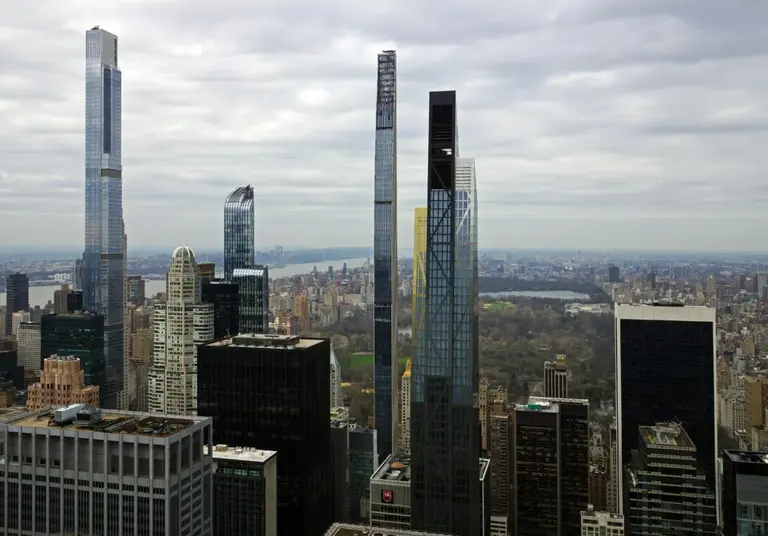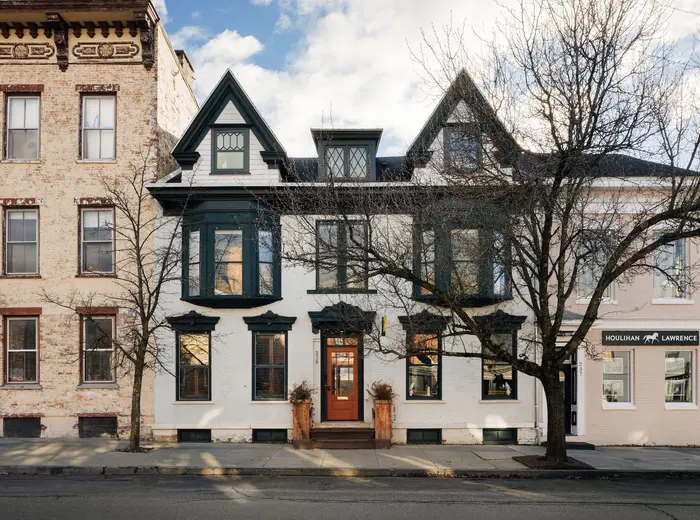New Yorker Book Review Calls 432 Park the Oligarch’s Erection

“Cities can’t win. When they do well, people resent them as citadels of inequality; when they do badly, they are cesspools of hopelessness.” This is the opening line to Adam Gopnik‘s New Yorker review of three forthcoming urban history books: Gerard Koeppel’s “City on a Grid: How New York Became New York,” which tells the history of the city’s famous 1811 street grid plan and explores how that forever shaped life in the city; Evan Friss’ “The Cycling City: Bicycles and Urban America in the 1890s,” which recounts the rise and fall of bicycle culture in the late 19th century; and David Maraniss’ “Once in a Great City: A Detroit Story.” These very specific topics lend themselves to larger themes about the current state of our city, and in exploring these, Gopnik came out with an incredible one liner:
The things that give cities a bad conscience are self-evident: seeing the rise of 432 Park Avenue, the tallest, ugliest, and among the most expensive private residences in the city’s history—the Oligarch’s Erection, as it should be known—as a catchment for the rich from which to look down on everyone else, it is hard not to feel that the civic virtues of commonality have been betrayed.
Gopnik titled his review “Naked Cities: The Death and Life of Urban America,” a combination of what he consider the the two best books about American cities—Reyner Banham’s “Los Angeles: The Architecture of Four Ecologies” and Jane Jacobs’ “The Death and Life of Great American Cities,” both of which advocate for “unplanned, organic, emergent cities,” albeit in very different ways. The overarching theme of his review is “For a city to thrive, it has to change. But how?” For example, he recalls the High Line: “Those of us who dreamed of the High Line as an improbable public benefit, and then saw it come true, had to accept that it would next become a subject of ridicule, as a cynical developer’s amenity, a green-tinted scam.”
When he gets into the nitty gritty of the books themselves, Gopnik discusses where the authors succeed–Koeppel tells the too little-known history of Manhattan’s street grid that was born not out of rational planning, but rather a haphazard bureaucratic process later influenced by (you guessed it) real estate speculation, and Friss is an unparalleled researcher, “his book is full of revelatory facts”–and where they fall short–Koeppel seems unable to nail down the grid’s “ambiguities,” and Friss “torturously tries to track academic concepts of class and mentalité onto what are, clearly, the inevitable inner squabbles of fan clubs and interest groups.” No book, however, is perfect, and both of these topics factor into trends that are playing out in the city today (bike lanes, bike shares, the Midtown East rezoning, and shadows from supertalls, to name a few). And as Gopnik says, “Cities change. It is their nature. Those which stop changing stop being cities. Cities that change entirely, though, cease to be themselves.”
[Via The New Yorker]
RELATED:



























